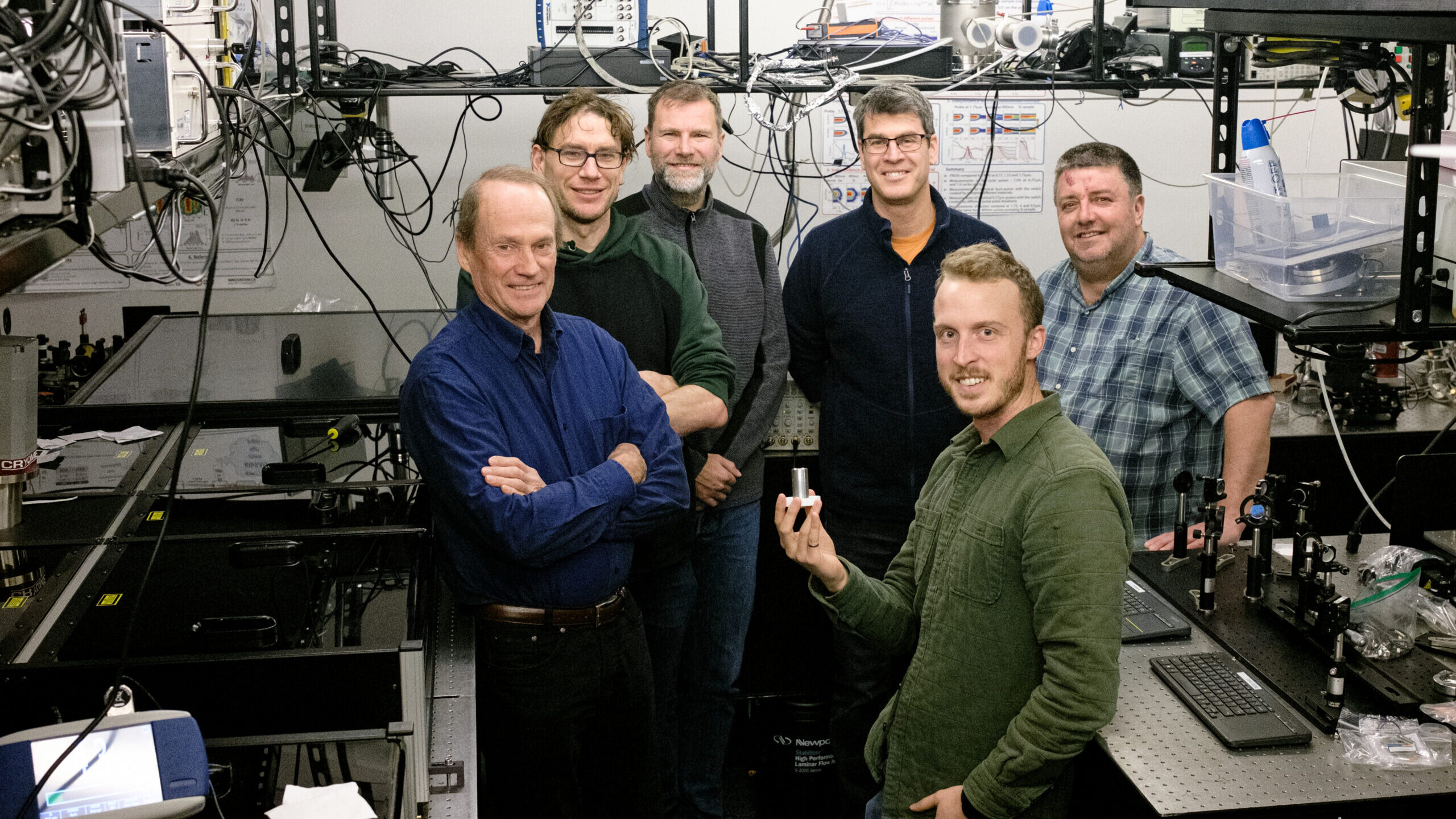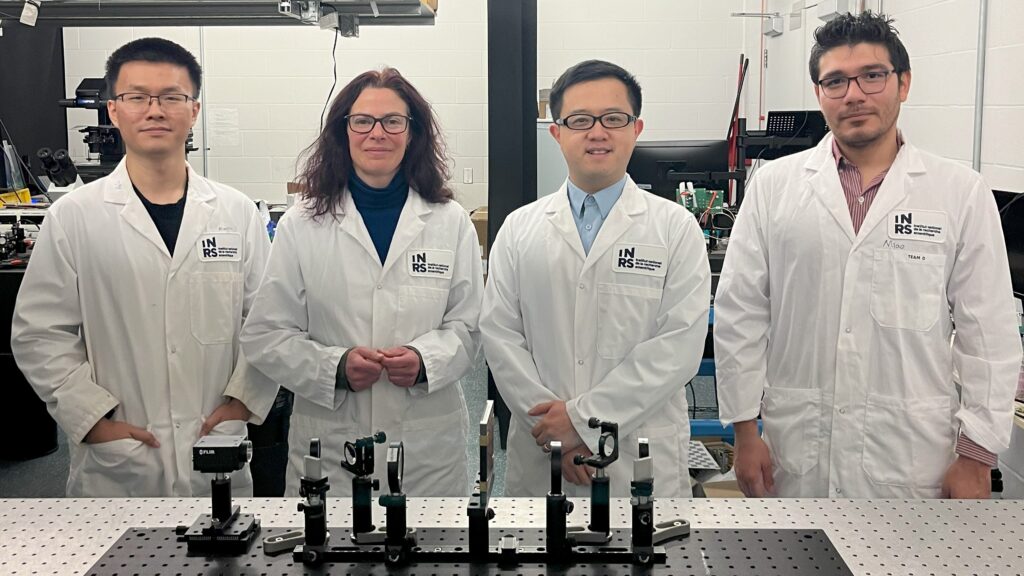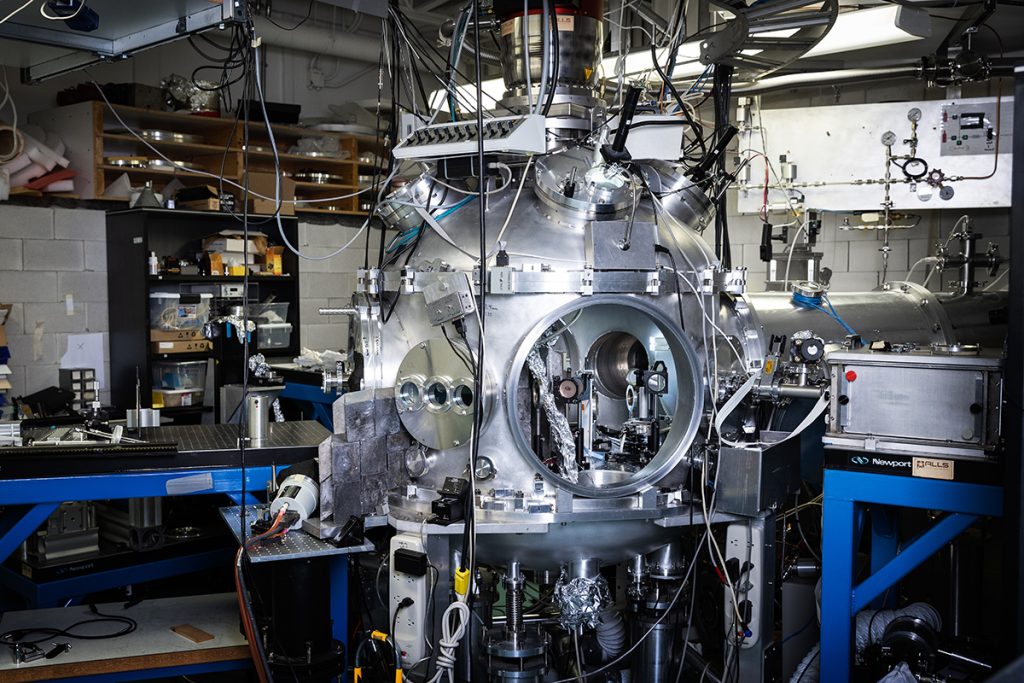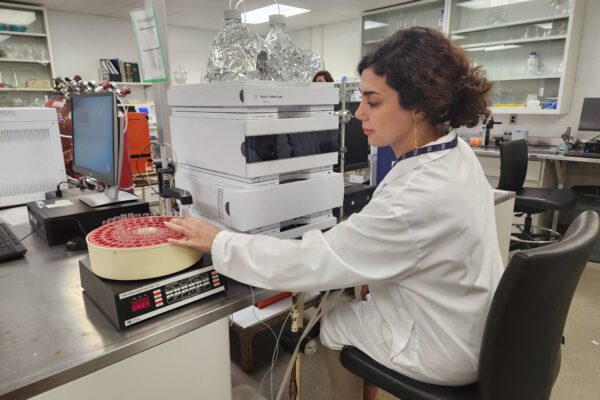- Research
The outstanding work of two INRS teams is among the 10 scientific discoveries of 2024 honoured by the Québec magazine.

These two discoveries at INRS were realized at a world-class research infrastructure that is unique in Canada: the Advanced Laser Light Source (ALLS).
For the 32nd edition of the 10 discoveries of the year, the jury of Québec Science scientists and journalists have selected the outstanding advances made by the teams of Professor François Légaré, Director of the INRS Centre Énergie Matériaux Télécommunications Research Centre, and Professor Jinyang Liang in the fields of laser technology and optical imaging. A fine achievement in a year celebrating the Institute’s 55th anniversary.
For more than 30 years, the magazine has selected the 10 most impressive Québec discoveries of the past year and then invited the public to vote for their favourite.
« Les travaux remarquables des professeurs Légaré et Liang et de leurs équipes font la fierté de l’INRS et contribuent à faire rayonner la recherche de qualité qui se fait au Québec. Le palmarès annuel de Québec Science rejoint la mission de l’Institut qui est de contribuer par la recherche et la formation d’une relève scientifique de haut calibre au développement social, économique et culturel de la société québécoise. »
Isabelle Delisle, INRS Scientific Director.
Improving cancer treatment with laser technology
The breakthrough achieved by Professor Légaré’s team, in collaboration with medical physicists from the McGill University Health Centre (MUHC), opens the door to major advances in radiation oncology. Their work has been published in the journal Laser & Photonics Reviews.

The project would make more effective use of a new radiotherapy approach, known as FLASH which is used to treat resistant tumours and delivers high doses of radiation in a very short time. The FLASH effect is still poorly understood in the research community, but the research team is determined to do something about it.
“No study has yet been able to explain the nature of the FLASH effect. However, the electron sources used in FLASH radiotherapy have similar characteristics to the one we produced by focusing tightly in the air with our laser. Once the effects of radiation are better controlled, further research will enable us to investigate what causes this phenomenon and, ultimately, to offer better radiotherapy treatments to cancer patients.” Simon Vallières, research associate and first author of the study.
Read the article in Québec science (discovery #8)
Pushing the limits of optical imaging by processing trillions of images per second
Setting speed records isn’t just for athletes. Researchers too can achieve these feats thanks to their discoveries. Such is the case of Professor Jinyang Liang and his team, whose research results have been published in Nature Communications.

The group at INRS, in collaboration with teams in France and China, has developed a new ultra-fast camera system that can capture up to 156.3 thousand billion (or trillion) 2D images per second with astonishing precision.
This innovative device, called SCARF (for swept-coded aperture real-time femtophotography), could push back the frontiers of knowledge in a wide range of fields, from modern physics, biology, and chemistry to materials science and engineering.
“With the help of SCARF, we’ll be able to observe unique phenomena that are unrepeatable, ultrafast, or difficult to reproduce, such as the mechanics of shock waves in living cells or in matter. These advances can eventually be used to develop better pharmaceuticals and medical treatments, as well as improve the mechanical properties of materials.” Miguel Marquez, postdoctoral fellow and co-first author of the study.
Read the article in Québec Science (discovery #2)

Vote for INRS discoveries
The public has until February 14, 2025, to support the INRS teams and vote for the discovery of the year that you think will make a lasting impression!
These two discoveries at INRS were realized at a world-class research infrastructure that is unique in Canada: the Advanced Laser Light Source (ALLS). The ALLS, under the leadership of director Heide Ibrahim, is dedicated to developing innovative laser sources with groundbreaking applications and making them accessible to its users.



